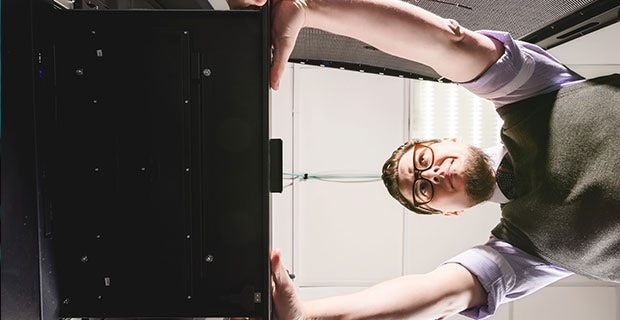June 22, 2017
Wondering How to Keep Your Data Center Cool? Consider These 5 Factors
Maintaining reliable and efficient operations requires you to think through your cooling strategy from several angles.

Technologies such as virtualization and the cloud have changed data centers dramatically in recent years. One thing that hasn’t changed, though, is the need to keep them cool.
While many organizations have moved data and workloads to the cloud, most keep some servers on-premises, often in smaller data centers or server closets. Because most physical servers operate multiple virtual machines, they run much hotter than servers devoted to a single application. Racks that previously consumed 2 or 3 kilowatt hours of electricity now use 5KWh to 10KWh.
This evolution demands that organizations change their cooling strategies. In years past, data centers could get by with larger air-conditioning units that blew cool air across a room. Today’s data centers need modular units that sit right next to a rack. With in-row cooling, there’s less need to use raised floors; this, in turn, can lower data center construction costs and allow faster deployment of additional racks.
Here are some key questions to consider when trying to keep your data center cool:
1. How big should your cooling unit be?
Sizing a cooling unit is similar to sizing an uninterruptible power supply. In general, you want to add up the total power load for each rack, then add 20 to 25 percent wiggle room.
But other factors are involved, such as the heat produced by other office equipment or humans. Does the room have windows? Is it on a perimeter wall? How well insulated is it? How hot does it get outside in summer? I usually recommend to customers who are outfitting a new data center that they have a site survey performed by a qualified professional.
2. How many units does your data center need?
Even if you’re using small server closets, you’ll need to take a close look at heat management. With virtualized servers and increasingly dense Power over Ethernet switches, using a fan to redirect the hot air isn’t going to work anymore. You’ll want independent cooling units for each closet.
3. Which kind of cooling system is best?
Most facilities use a direct expansion unit, which is a traditional AC system with an air circulator in the room and a condenser on the roof. But if your building already uses a chilled-water system, tying your cooling units into that can reduce the energy load and save money.
4. How much redundancy do you require?
If your cooling system fails, your servers may start to overheat after only a few minutes. Connect the cooling unit to a backup generator, if you have one, and consider having a redundant system you can use during emergencies.
5. Are you managing the environment?
The last thing you want to do is to open the server closet and discover it’s 115 degrees inside. Consider getting a smart environmental management appliance that can alert you if the temperature spikes and automatically shut down servers before they are damaged.
By closely managing the environment, you might even be able to safely raise your data center’s average temperature, saving money on utility bills.
